Reviews
Warren Beatty
USA, 1990
Credits
Review by Adam Balz
Posted on 18 June 2013
Source iTunes rental
Categories Failed Franchises
In DisneyWar, his thorough history of Disney’s decades-long collapse as a company, journalist James B. Stewart writes that Dick Tracy - Warren Beatty’s stylized 1990 adaptation of Chester Gould’s comic strip - caused Disney Studios chairman Jeffrey Katzenberg profound self-reflection: “Dick Tracy, Katzenberg concluded, ‘was also about losing control of our own destiny. And that’s too high a price to pay for any movie.’” What should have been a simple, star-studded blockbuster, its plot tailor-made for mass consumption, became a bloated, over-budget distraction. Writes Stewart,
Beatty was indecisive, a perfectionist, and insisted on numerous takes of scenes. Notoriously promiscuous, Beatty was having an affair with his co-star, Madonna, even while arranging afternoon trysts on the set with other women. Though charming, Beatty consumed vast amounts of time: [Katzenberg] had to spend an inordinate amount of time on the set and had dinner with Beatty every night, either at the studio or at Hamburger Hamlet in West Hollywood. Dick Tracy eventually cost $47 [from an original $27 million budget], which would’ve been far higher if Katzenberg hadn’t kept such close watch.
Everything about the film should have guaranteed a successful enterprise. Beatty’s first directorial outing since winning an Oscar for Reds nearly a decade earlier, it also marked a chance for him to redeem himself as an actor after Ishtar became a national punchline. Acting alongside him would be A-listers in roles both big and small: Al Pacino, Madonna, Dustin Hoffman, Estelle Parsons, Mandy Patinkin, Dick Van Dyke, Charles Durning, James Caan, Paul Sorvino, and William Forsythe. The film would feature four original songs by Stephen Sondeim, an original score by Danny Elfman, striking cinematography by Oscar-winner Vittorio Storaro and evocative sets by Rick Simpson, and costumes by Oscar-winner and Kubrick standard-bearer Milena Canonero. It would also introduce the character of Dick Tracy, Jr., whose relationship with both the titular detective and Tess Trueheart would add emotional depth and, possibly, leave room for future films in the franchise. There would be stunts, sexual intrigue, politics, gunfire, car chases, plot twists, singing, and dancing—everything that appealed to a mass audience in the early 90s.
And yet, the final product is a dull mess. Beneath the costumes, sets, and cinematography - all of which are gorgeous to the point of welcomed distraction - is the story of a famous and feared detective whose attempts to bring down crime-boss Big Boy Caprice are stymied by a corrupt D.A., dead witnesses, and a seductive nightclub singer named Breathless Mahoney, who also happens to be Caprice’s unwilling girl. Tracy spends much of the film following cliched investigative protocol - interrogating suspects to no apparent effect, using photos to identify automobiles while tousling his hair in frustration, jumping the gun on arrests with cocksure confidence - all the while living in a nondescript downtown apartment where, as we later discover, any of the city’s gun-toting baddies could easily fool the detective into opening the front door and kill him at point-blank range. (They also know where Tess Trueheart lives—a similarly nondescript apartment they have no compunctions against blowing up to kill Tracy.)
But they don’t kill him that way, and when asked why, Caprice gives a simple answer: he would be the first - and obvious - suspect, which makes little sense as a reason to not kill someone. Throughout the film, Caprice wastes little thought on killing those who stand in his way, as long as they’re not the man in yellow: five criminals at the start of the film, followed by club owner Lips Manlis (drowned in a cement-filled box) and crime boss Spaldoni (a car bomb detonated outside of Caprice’s own club), not to mention a slew of police officers and the corrupt district attorney who is running for mayor; he even attempts to kill one of Tracy’s right-hand men, tasked with listening in on Caprice’s meetings from the floor above, but never Tracy himself.
Added to this is the character of Dick Tracy Jr., originally known as The Kid. Other than rescuing Dick Tracy from quite a few murder attempts by Caprice and his men, Tracy Jr. adds nothing to the film besides his sad stare and voracious appetite. In fact, the film opens with the kid witnessing the murder of five other criminals by Caprice’s right-hand man, Flattop, but he never says anything to Tracy about it. This is especially egregious since Tracy Jr. spends much of the film watching as Tracy tries to get Breathless Mahoney to testify against Caprice. The Kid never makes the connection, Tracy never bothers to ask, and the entire subplot withers away towards pointlessness.
Lastly there is the faceless villain who appears halfway through the film, voice gargled and motives unspoken, and manages to set up both Tracy and Caprice for crimes they did not commit—something done with such ease and obvious effect that it speaks to a general sense of idiocy on the part of both hero and his main nemesis. When this faceless villain’s identity is finally revealed in one of the film’s closing moments, we’re not entirely surprised - after all, the scene preceding this involved almost every other character being either arrested or killed, leaving only Breathless Mahoney - but we’re left confused, as Mahoney has spent most of the film being forced to work non-stop by her club-owning boyfriend. At what point, you wonder, did she find time to not only plan this - and plan it as well as she did - but also execute it to such awesome effect? This issue, on top of all the others, drag what should have been a fun, thrilling popcorn flick down to the level of a poorly planned, poorly maintained ego-feed.
The irony is that, as Katzenberg watched Dick Tracy - the film into which he’d put so much time, money, and hope - earn back a modest sum while receiving tepid reviews from critics, an overlooked little film that was also released by Disney, Pretty Woman, was earning raves alongside box-office returns that, in the end, would bring in more than ten times its original budget in profit, despite being R-rated and starring a relatively unknown actress named Julia Roberts. Nothing about Pretty Woman is complicated or flashy - after all, it’s just Disney’s Cinderella with a few adult-oriented, modern-day adjustments - and yet it works far more than Beatty’s film does. And beyond this irony - what we might now call the uncanniness of the situation - is that, had Katzenberg looked closely at the script for Dick Tracy, he would have seen a perfect allegory for what was about to happen.
Dick Tracy spends the film going after Big Boy Caprice when he should really be going after Breathless Mahoney, not as a potential witness, but as a master criminal in her own right. (Remember, it is her actions that bring about the assassination of the D.A. and the framing of Dick Tracy for his murder, and he already knows she was present when Lips Manlis was murdered, having left an earring behind.) We see Dick Tracy’s mistake mirrored by Katzenberg’s: focusing on the big, rich, flashy Dick Tracy instead of the pretty woman—in this case, Pretty Woman. Garry Marshall’s hooker-with-a-heart-of-gold film raked in the cash for Disney, despite it being far from their customary kind of film, just as Breathless was far from Tracy’s customary kind of villain. (Considering the slew of plaster-faced male villains, Breathless is more than just the only one without makeup effects of any kind—as played by Madonna, she’s decidedly beautiful.) Breathless sticks out for her lack of physical or facial deformities and is therefore paradoxically ignored by Tracy as a possible villain—she couldn’t possibly be involved beyond her role as Caprice’s lover and star attraction, just as the very normal, very simple Pretty Woman couldn’t possibly end up being a hit, sitting so plainly among the other films that were scoring big at the same time: Total Recall, Die Hard 2, Home Alone, and even the third Back to the Future film. As it turns out, both Tracy and Katzenberg - two men with enormous power and influence - were wrong.
In writing about the production of both Dick Tracy and Pretty Woman, James B. Stewart recounts how both films fared:
Pretty Woman opened in March 1990. Despite Disney’s worries, Roger Ebert wrote in the Chicago Sun-Times that “It’s astonishing that ‘Pretty Woman’ is such an innocent movie—that it’s the sweetest and most open-hearted love fables since ‘The Princess Bride.’ Here is a movie that could have marched us down the mean streets into the sinks of iniquity, and it glows with romance.” Only after he saw the opening weekend box office did [Disney CEO and chairman Michael] Eisner concede the film might be a hit… Dick Tracy opened three months later, backed by an extraordinary $54 million marketing campaign. Reviews were mixed: praise for the stylish, brightly colored sets and costumes, but tepid reactions to the overall effect. The film grossed a respectable $100 million, which barely covered production and marketing costs. Merchandise tie-ins languished mostly unsold. Thoughts of turning Dick Tracy into an Indiana Jones-style franchise evaporated.
—Steward, James B. DisneyWar. New York: Simon & Schuster, 2005. Print. 110-115.
More Failed Franchises
-
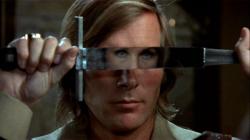
Captain Kronos - Vampire Hunter
1974 -
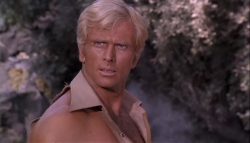
Doc Savage: Man of Bronze
1975 -
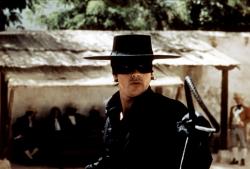
Zorro
1975 -
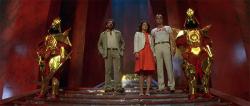
Flash Gordon
1980 -
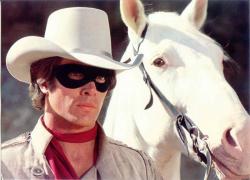
The Legend of the Lone Ranger
1981 -
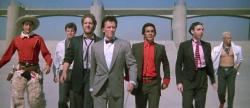
The Adventures of Buckaroo Banzai Across the 8th Dimension!
1984 -
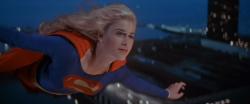
Supergirl
1984 -

Dune
1984 -
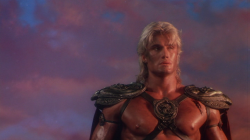
Masters of the Universe
1987 -
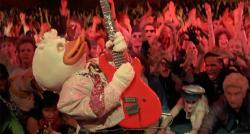
Howard the Duck
1986 -

Willow
1988 -
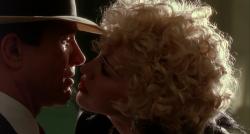
Dick Tracy
1990 -
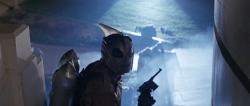
The Rocketeer
1991 -
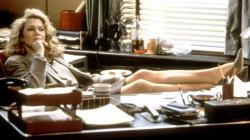
V.I. Warshawski
1991 -
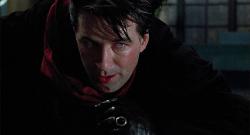
The Shadow
1994 -

Godzilla
1998 -

The Zero Effect
1998 -
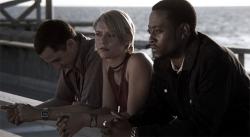
The Mod Squad
1999 -

Hulk
2003 -
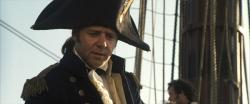
Master and Commander: The Far Side of the World
2003 -
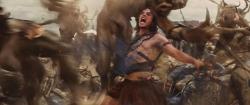
John Carter
2012
We don’t do comments anymore, but you may contact us here or find us on Twitter or Facebook.



